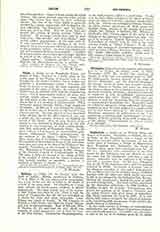

Selinus, a titular see in Isauria, near the Gulf of Adalia. Selinus, mentioned by Ptolemy, V, 8, 2, Pliny, V, 22, and other ancient geographies, was a port on the east side of Cilicia at the mouth of a river of the same name. Its situation on a steep rock, whence its Greek name, rendered it almost impregnable. The only known fact of its history is that Trajan died there in 117. Then it took the name of Trajanopolis, but the old one prevailed, as is shown by coins and other documents. Later Selinus was joined to Isauria. In 198 Longinus of Selinus, a rebel leader, was taken by Count Driscus and sent to Constantinople. Basil of Seleucia (Vita S. Theclae, II, 17) said that the city, which was formerly of much importance, lost it from his time to the fifth century. Constantine Porphyrogenitus, in the tenth century, called it a small town. Today it is the little village of Selinti in the vilayet of Adana; there are ruins of a theatre, aqueduct, marketplace, bath, etc. Selinus was suffragan of Seleucia Trachwa. Le Quien (Oriens christianus, II, 1019) names four bishops: Neon, present at the council of Constantinople, 381; Alypius, at Ephesus, 431; Elianus, at Chalcedon, 451; Gheon, signer of the letter of the bishops of the province to Emperor Leo, 458. The see is in the Greek “Notitiae Episcopatuum” of the Patriarchate of Antioch from the fifth to the tenth century (Vailhe in “Echos d’Orient”, X, 95, 195). It was also perhaps an Armenian bishopric until the tenth century (Alishan, Sissouan, Venice, 1899, p. 60). Eubel (Hierarchia catholica medii nevi, I, 468) names a Latin bishop in 1345.
S PETRIDES

